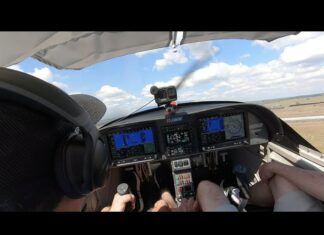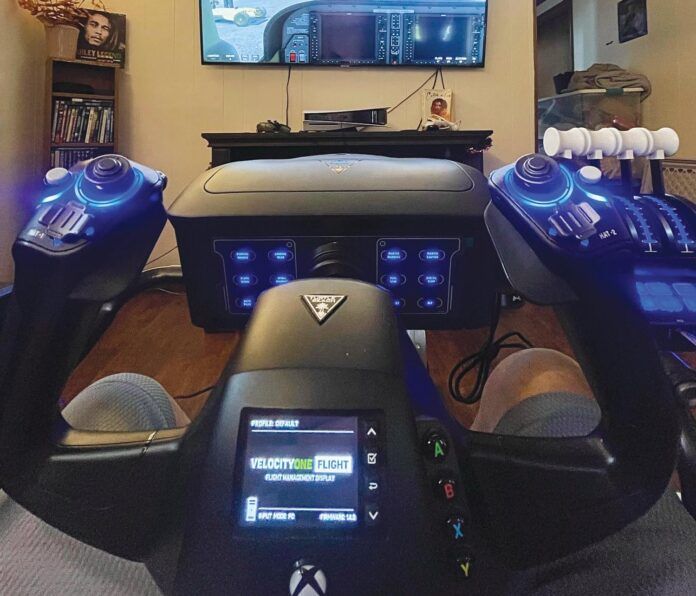
We use them for ratings training, recurrency, familiarization of the flight environment when planning a trip and simply for virtual aviating when we can’t strap into the real airplane.
If you haven’t looked at hardware and graphics in a while, you’ll jaw-drop at the capabilities and realism of new software. But the real challenge starts at selecting the right computer platform to support the latest virtual capabilities.
In this first in a series of tech reports, I’ll put my IT pro’s eyes on the backbone of your sim—the PC that drives it. Let’s keep it simple and focus on building a machine to keep your sim reliably flying to its full potential, with top picks for must-have processing components.
Graphics 101
I’ll focus on MS Windows-based machines dedicated entirely for the simulator. Sure, higher-end Apple iOS machines can work, too, but Windows PCs have dominated the gaming world for decades, in both support, graphics capability and price. You’ll still need to invest in hardware with the horsepower that will support the sim today and down the road. Like avionics, computer components change rapidly.
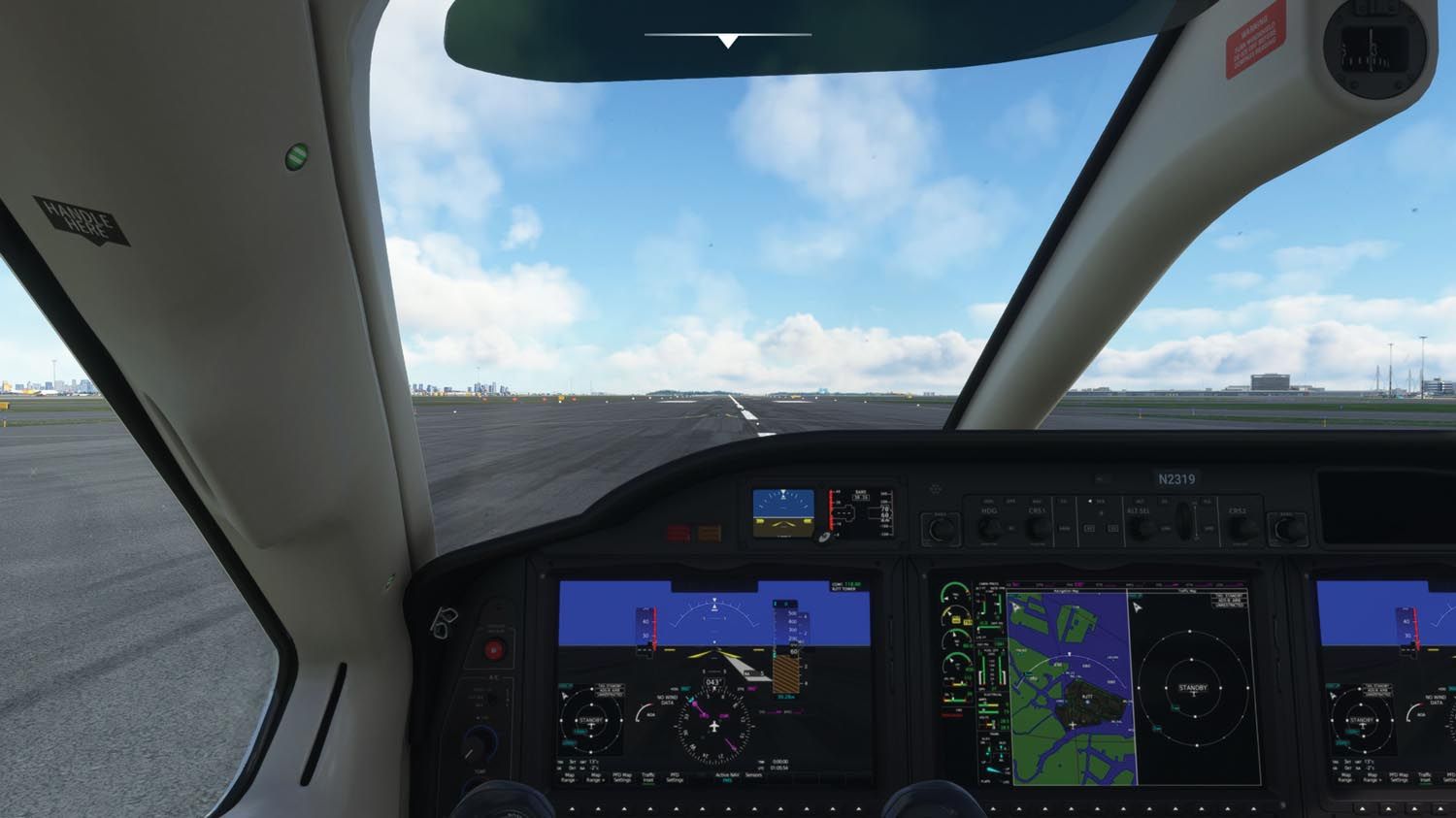
The one internal component that matters the most is the video card. Video cards hit a record high in popularity since the pandemic and finding one in 2021 was impossible. While you can now readily source them, the prices remain high. What’s good enough for a modern flight sim?
You can get by at this point with a NVIDIA RTX 4070, which is the latest in the NVIDIA video card market, but that doesn’t mean it won’t hurt to go higher end. NVIDIA’s RTX 4090 with 16,384 CUDA cores, 24GB memory size with a boost clock of 2.52 GHz will allow you to max out all settings and never worry about one hiccup while flying through the graphics-heavy New York City skyline in MS Flight 2020. But good graphics performance comes at a price premium and you’ll find prices starting at around $1600 just for the card. Another comparable option in the video card market would be the AMD Radeon RX 7900 XTX. This card will have the same 24GB of memory and the price tag is a bit lower at $949, but the quality of NVIDIA cards (especially for the 4090 series) would only meet the comparisons with an overclock of the AMD Radeon to come close.
Processing horsepower
Aside from at least 16 GB of RAM, the processor is the next item that is important in getting the best work out of your video card. In my view, the processor market is really down to two top picks. Specifically for running an efficient gaming console, Intel and AMD rule the market.
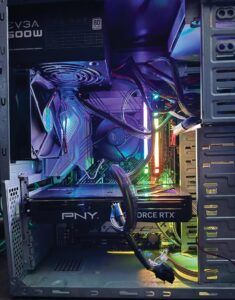
If you are looking for high performance at a best value, then the Intel Core i7-13700K (that is the 13th generation of Intel processors) will get the job done. A 3.4-GHz Performance-core processor and 2.5-GHz Efficient-core for a total of 16 cores at CPU socket-type LGA 1700 is one example. This processor, with the combination of the video card and memory, will still keep your MS Flight settings at max. List pricing for this model can start at around $390.
If budget is not a factor, then the Intel Core i9-14900k (which is the Intel’s 14th-gen processor) is a decent way to go. This beast has a 3.2-GHz P-core base and a 2.4-GHz E-core base and has a thermal velocity boost frequency of 6.0 GHz. There is no limit to what you can run with this processor. List price is $599.
AMD is your next best option if you want something other than Intel, with the AMD Ryzen 7 7950X3D at 16-cores, which has a base spec of 4.2 GHz and a maximum of 5.7 GHz. The socket on this model is AM5. Worth mentioning is that AMD is one of the top processors on the market for gaming, and pricing on an AMD will start at around $600. My intention here isn’t to review each processor model, but instead cut to the chase by suggesting what I think is the best for optimum flight simulating. A quick web search on these models will return lots of geeky tech articles and videos providing detailed comparisons. More important to the average home sim user is spec’ing a system that works without freezing and crashing, and to a high graphics standard. Read on—processors can’t stand on their own.
Motherboards to flight controls
These play a huge role in supporting the processor and my experience shows that a great option that will easily handle either most preferred processor would be either an ASUS or MSI. The ASUS TUF Gaming Z690 will handle LGA 1700 (Intel 12th- and 13th-gen models) processors and can come in a couple of different flavors. I would recommend ASUS Z690 with the M.2 slot for current-gen SSD cards.
The Samsung 970 EVO (at 2TB) is a great model to add to this board. You will need the space for MS Flight’s massive world and all the updates that come with it. The MSI MAG X670E Tomahawk (built-in Wi-Fi) is a great option with an AMD processor. It supports any 7000-series processor from AMD and has a slot for a M.2 Gen5 SSD.
After getting the computer equipment needed to run your simulator (and fast plug-in internet to support it), you’ll need a flight stick to get to the virtual skies. I can’t come close to covering all the possibilities, so I’ll mention some standouts. First, there are many flavors—basic and complex. A great introductory stick that is made specifically for flight simulators is the Turtle Beach VelocityOne (www.turtlebeach.com). This is a good starting point because it comes with not only the flight stick, but throttle controllers for both single- and multi-engine planes. It has integrated rudder controls (if you do not have pedals) and two sets of HAT switches that can be programed for anything in MS Flight 2020. The VelocityOne has a flight management display with full-color graphics and allows you to set multiple profiles for different aircraft. It also has an authentic status indicator panel that MS Flight 2020 has started to integrate into the system for live updates on aircraft engine status. For a price point starting at $379, I think it’s a great starter kit for anyone looking to get some practice at home. If you decide to get actual pedals for the rudder controls, Turtle Beach also has the VelocityOne Rudder controls, starting at $299.
On the higher end of controls (and perhaps more authentic) there’s the Honeycomb Flight Sim Hardware (www.flyhoneycomb.com). The Honeycomb Alpha flight control XPC starts at $349 and has been we’ll received in the market. However, one issue is you will need to buy throttle controls separately. The Bravo Throttle Quadrant set that simply adds to the Alpha Flight starts at $279. This throttle setup has an indicator for landing gear and an authentic up/down gear handle. It also has an annunciator panel with seven two-way programmable switches and 14 warning lights. Wanna fly an Airbus? For an additional $49 you can get the throttle add-on for the model A380.
If you are looking for even more realism, then you can go to www.flightvelocity.com where you’ll find full-up glass panels, including the Garmin G1000 suite with cutouts for each panel. This is where the big money comes into play and maybe you want this at your flight school, so that both the real thing and the simulator are not far apart. The Flight Velocity G1000 Suite starts at $2099 without a desktop stand. The good news is that even if you just wanted to add this to your Turtle Beach VelocityOne setup it should all work together within your MS Flight 2020 and PC setup. We’ll round up the peripherals in a dedicated report.
Like a plane, sort of
One of the best setups in my opinion is from a vendor called Next Level Racing (www.nextlevelracing.com). They have the Flight Simulator Pro setup that starts at $1098 and comes with the Flight Stand Pro and Flight Set Pro. With it you will have a mount for your keyboard/mouse, yoke and throttle setup, rudder pedals and glass panels, if you choose them. Admittedly, it is a pricey setup, but it will give you everything you need.
Sporty’s has a variety of options, including the $629 Flight Sim Starter Set and $360 Logitech G yoke and rudder pedal kit, to name a couple. We’ll look closely at controls and how we’ll how they interface with flight sim software in an upcoming article on flight sim software.
As a primer, the MS Flight Simulator and X-Plane 12 programs will work with most hardware setups, but both programs are resource-hungry platforms.
I have been using MS Flight Sim since the late 1990s and it keeps getting better, but only with the right computer supporting it. Recently Microsoft announced it will be releasing Flight Simulator 2024, with a new emphasis on airlines and mission-based flight ops. This includes wildfire and mountain rescue flying, plus crop-dusting and balloon flight.
Flight simulators have become a big market and there are tons of forums and YouTube channels out there to learn the ropes and communicate with others for ideas. Start by building the right PC for a seamless virtual flying experience.
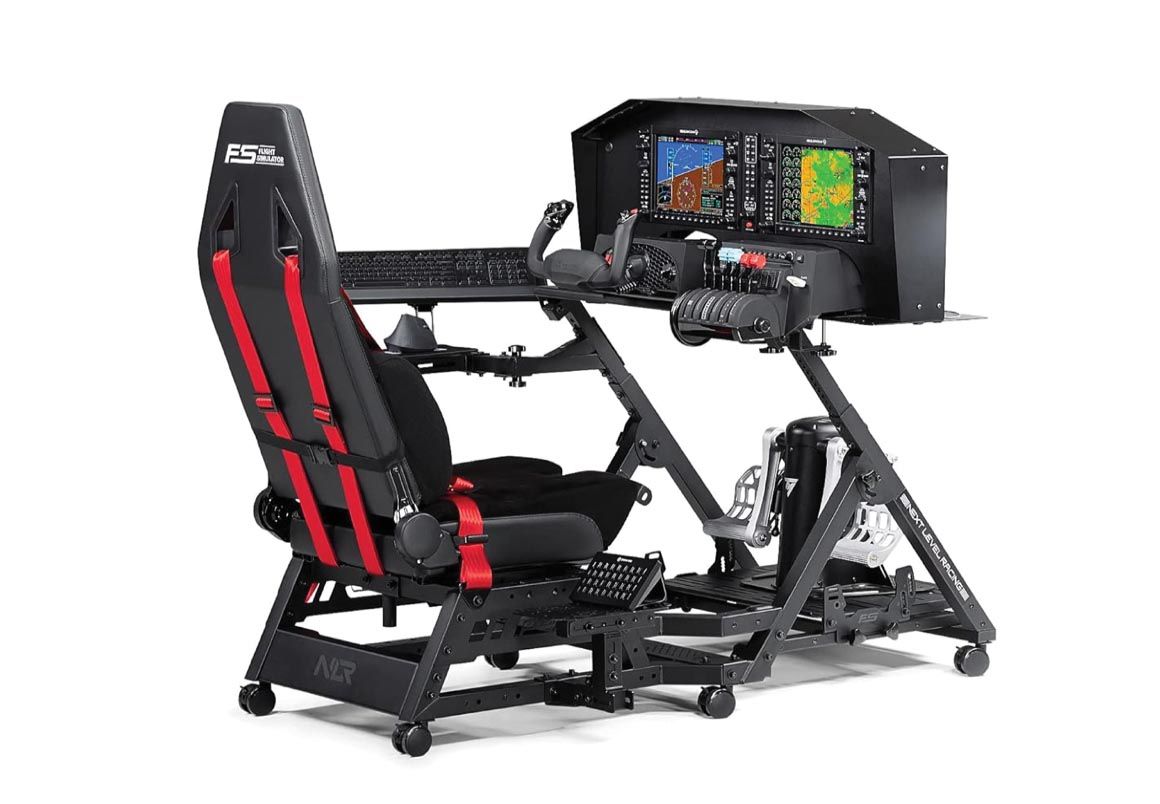
With the help of IT guru Jason Montijo, building a capable and high-horsepower PC only scratches the surface of what’s already generating a hefty invoice. So far we’ve spec’d an Intel B660 6GB/s DDR4 Micro ATX motherboard for $90, a 12GB ATX video graphics card for $550, an Intel Core i7 processor for $400, a 1TB Samsung solid state hard drive for $60, a 40-inch gaming monitor for $400, plus some extras to include cooling fans, power supply and an ATX gaming chassis to house all the processors. Add it all up and the invoice is near $2000. But it doesn’t stop there. What about the virtual cockpit? A basic set of controls starts at around $500 (we’ll cover these options in the second article), but what caught my eye was the Next Level Racing Flight Stand Pro chassis, pictured there in the center. For $500 you get the chassis with lockable caster wheels, a gaming chair cradle (the optional Flight Seat Pro chair is another $600) and hardware for mounting peripherals. And speaking of mounting, Montijo reminded me that I can either mount that big gaming monitor on my office wall or a better option, on Next Level Racing’s freestanding monitor stand—another $300.
In the end it’ll be easy to drop we’ll north of $5000 on an office flight sim that hits all the high points, including a fast and efficient computer, cockpit hardware and all the extras. Stay tuned and in the meantime, if there’s a modern setup that’s been working for you, we want to hear about it.
—Larry Anglisano

